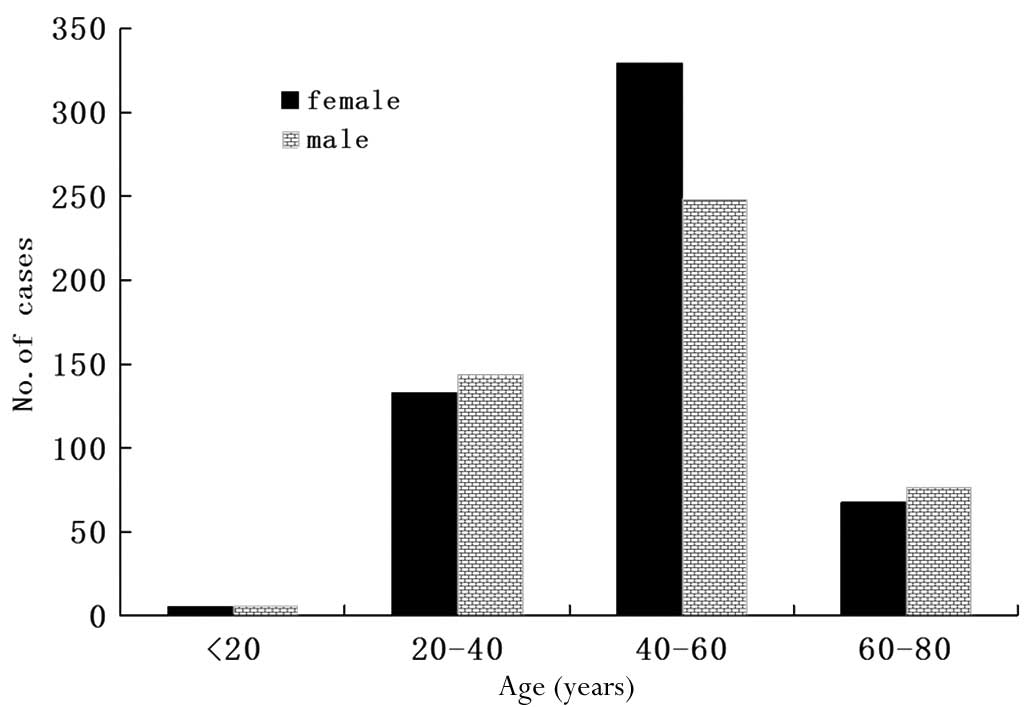|
1
|
Evans DG, Moran A, King A, Saeed S,
Gurusinghe N and Ramsden R: Incidence of vestibular schwannoma and
neurofibromatosis 2 in the north west of england over a 10-year
period: higher incidence than previously thought. Otol Neurotol.
26:93–97. 2005.PubMed/NCBI
|
|
2
|
Nikolopoulos TP, Fortnum H, O’Donoghue G
and Baguley D: Acoustic neuroma growth: a systematic review of the
evidence. Otol Neurotol. 31:478–485. 2010. View Article : Google Scholar : PubMed/NCBI
|
|
3
|
Zhou LF, Chen XC and Shi YQ: Modern
Neurosurgery. Fudan Press; Shanghai: 2001
|
|
4
|
Samii M, Gerganov V and Samii A: Improved
preservation of hearing and facial nerve function in vestibular
schwannoma surgery via the retrosigmoid approach in a series of 200
patients. J Neurosurg. 105:527–535. 2006. View Article : Google Scholar : PubMed/NCBI
|
|
5
|
Goksu N, Bayazit Y and Kemaloglu Y:
Endoscopy of the posterior fossa and endoscopic dissection of
acoustic neuroma. Neurosurg Focus. 6:e151999. View Article : Google Scholar : PubMed/NCBI
|
|
6
|
Tringali S, Bertholon P, Chelikh L,
Jacquet C, Prades JM and Martin C: Hearing preservation after
modified translabyrinthine approach performed to remove a
vestibular schwannoma. Ann Otol Rhinol Laryngol. 113:152–155. 2004.
View Article : Google Scholar
|
|
7
|
Sanna M, Khrais T, Russo A, Piccirillo E
and Augurio A: Hearing preservation surgery in vestibular
schwannoma: the hidden truth. Ann Otol Rhinol Laryngol.
113:156–163. 2004. View Article : Google Scholar : PubMed/NCBI
|
|
8
|
Chee GH, Nedzelski JM and Rowed D:
Acoustic neuroma surgery: the results of long-term hearing
preservation. Otol Neurotol. 24:672–676. 2003. View Article : Google Scholar : PubMed/NCBI
|
|
9
|
Brackmann DE, Owens RM, Friedman RA, et
al: Prognostic factors for hearing preservation in vestibular
schwannoma surgery. Am J Otol. 21:417–424. 2000. View Article : Google Scholar : PubMed/NCBI
|
|
10
|
Lassaletta L, Fontes L, Melcon E, Sarria
MJ and Gavilan J: Hearing preservation with the retrosigmoid
approach for vestibular schwannoma: Myth or reality? Otolaryngol
Head Neck Surg. 129:397–401. 2003. View Article : Google Scholar : PubMed/NCBI
|
|
11
|
Beenstock M: Predicting the stability and
growth of acoustic neuromas. Otol Neurotol. 23:542–549. 2002.
View Article : Google Scholar : PubMed/NCBI
|
|
12
|
Yamakami I, Oka N and Yamaura A:
Intraoperative monitoring of cochlear nerve compound action
potential in cerebellopontine angle tumour removal. J Clin
Neurosci. 10:567–570. 2003. View Article : Google Scholar : PubMed/NCBI
|
|
13
|
Matthies C and Samii M: Management of 1000
vestibular schwannomas (acoustic neuromas): clinical presentation.
Neurosurgery. 40:1–9, (discussion 9–10), 1997.
|
|
14
|
Smouha EE, Yoo M, Mohr K and Davis RP:
Conservative management of acoustic neuroma: a meta-analysis and
proposed treatment algorithm. Laryngoscope. 115:450–454. 2005.
View Article : Google Scholar
|
|
15
|
Selesnick SH and Johnson G: Radiologic
surveillance of acoustic neuromas. Am J Otol. 19:846–849.
1998.PubMed/NCBI
|
|
16
|
Yoshimoto Y: Systematic review of the
natural history of vestibular schwannoma. J Neurosurg. 103:59–63.
2005. View Article : Google Scholar : PubMed/NCBI
|
|
17
|
Rosenberg SI: Natural history of acoustic
neuromas. Laryngoscope. 110:497–508. 2000.
|
|
18
|
Ogawa K, Kanzaki J, Ogawa S, Yamamoto M,
Ikeda S and Shiobara R: The growth rate of acoustic neuromas. Acta
Otolaryngol Suppl. 487:157–163. 1991. View Article : Google Scholar : PubMed/NCBI
|
|
19
|
Stangerup SE, Caye-Thomasen P, Tos M and
Thomsen J: The natural history of vestibular schwannoma. Otol
Neurotol. 27:547–552. 2006. View Article : Google Scholar : PubMed/NCBI
|
|
20
|
Fucci MJ, Buchman CA, Brackmann DE and
Berliner KI: Acoustic tumor growth: Implications for treatment
choices. Am J Otol. 20:495–499. 1999.PubMed/NCBI
|
|
21
|
Walsh RM, Bath AP, Bance ML, Keller A,
Tator CH and Rutka JA: The role of conservative management of
vestibular schwannomas. Clin Otolaryngol Allied Sci. 25:28–39.
2000. View Article : Google Scholar : PubMed/NCBI
|
|
22
|
Artz JC, Timmer FC, Mulder JJ, Cremers CW
and Graamans K: Predictors of future growth of sporadic vestibular
schwannomas obtained by history and radiologic assessment of the
tumor. Eur Arch Otorhinolaryngol. 266:641–646. 2009. View Article : Google Scholar : PubMed/NCBI
|
|
23
|
Gibson WP: Hypothetical mechanism for
vertigo in Meniere’s disease. Otolaryngol Clin North Am.
43:1019–1027. 2010.
|
|
24
|
Samii M and Matthies C: Management of 1000
vestibular schwannomas (acoustic neuromas): the facial nerve -
preservation and restitution of function. Neurosurgery. 40:684–694,
(discussion 694–685), 1997.
|
|
25
|
Arts HA, Telian SA, El-Kashlan H and
Thompson BG: Hearing preservation and facial nerve outcomes in
vestibular schwannoma surgery: results using the middle cranial
fossa approach. Otol Neurotol. 27:234–241. 2006. View Article : Google Scholar : PubMed/NCBI
|
|
26
|
Martin TP: Conservative management of
acoustic neuroma: a meta-analysis and proposed treatment algorithm.
Laryngoscope. 115:17042005. View Article : Google Scholar : PubMed/NCBI
|
|
27
|
Tschudi DC, Linder TE and Fisch U:
Conservative management of unilateral acoustic neuromas. Am J Otol.
21:722–728. 2000.PubMed/NCBI
|
|
28
|
Flint D, Fagan P and Panarese A:
Conservative management of sporadic unilateral acoustic neuromas. J
Laryngol Otol. 119:424–428. 2005. View Article : Google Scholar : PubMed/NCBI
|
|
29
|
Herwadker A, Vokurka EA, Evans DG, Ramsden
RT and Jackson A: Size and growth rate of sporadic vestibular
schwannoma: predictive value of information available at
presentation. Otol Neurotol. 26:86–92. 2005. View Article : Google Scholar : PubMed/NCBI
|
|
30
|
Huang X, Xu J and Zhong P: The clinical
feature of intracranial vestibular schwannomas-A retrospective
review of 1009 vestibular schwannomas in single hospital. Acta
Neurochirurgica. 153:1833–1905. 2011.
|










